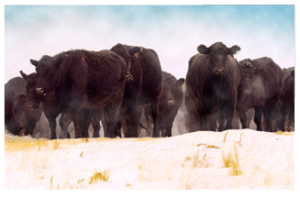Recognizing The Need For Disinfection In Your Poultry Operation
Click here to view as a pdf: Recognizing The Need For Disinfection In Your Poultry Operation
By Stephanie Hutsko, PhD
Why do we need to have a disinfection plan in place when working with livestock, especially poultry? One word: pathogens.
Pathogens are bacteria or viruses that, when exposure levels are high enough, can cause disease. When bacteria are left uncontrolled, their numbers grow quickly, wreaking havoc on the birds exposed to them. A common parasite associated with poultry, Eimeria sp, can lead to coccidiosis. Common bacteria associated with poultry include Salmonella and E. coli, both of which can lead to food safety concerns. The main poultry viruses we are concerned about are Newcastle disease, Marek’s disease and Avian Influenza.


 With winter fast approaching, it is time to prepare your livestock for the upcoming cold season. The following tips can help maximize the performance of your animals this winter:
With winter fast approaching, it is time to prepare your livestock for the upcoming cold season. The following tips can help maximize the performance of your animals this winter: Click here to view as a pdf:
Click here to view as a pdf:  By Alex Austin, B.S.
By Alex Austin, B.S.